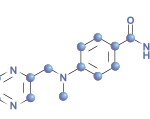Through a study of the Adverse Events Reporting system (AERS) and a literature review, Bezabeh et al identified reports of this potential interaction.11 Most patients were receiving high-dose MTX for cancer indications, but other indications included psoriatic arthropathy, pulmonary fibrosis, and RA, where lower MTX doses were used. When the AERS reports were evaluated, reactions included renal toxicity, hematologic events, and myopathy, and two of those case reports suggested that the PPI interfered with the elimination of MTX. Since PPIs are used extensively, healthcare practitioners need to be aware of this potential interaction. In several of the case reports evaluated, elimination of MTX normalized when the drug was removed. Additionally, when an H-2 receptor blocker was substituted for the PPI, no MTX toxicity was identified. When an H-2 receptor blocker was then stopped and the PPI was restarted, the MTX toxicity reappeared (a positive rechallenge). Although no formal studies have been conducted on this potential interaction and subsequent MTX toxicity, evidence of disappearance of the reaction upon drug discontinuation and/or reappearance of the reaction upon rechallenge are strong suggestions of causality. This possible drug–drug interaction has been added to the labels for intravenous MTX and for PPIs.
In patients where gastric acid suppression is clinically indicated during MTX therapy, clinicians should consider substituting an H-2 receptor blocker (e.g., famotidine, ranitidine, nizatidine) for a PPI. The H-2 receptor blocker cimetidine might not be a good choice due to its numerous potential drug interactions. Clinicians are also encouraged to report any suspected cases of this potential drug–drug interaction, leading to MTX toxicity or other potential drug-induced events, to the FDA MedWatch program at www.fda.gov/medwatch.
Michele B. Kaufman, PharmD, BSc, RPh, is a freelance medical writer based in New York City, a clinical pharmacist at New York Downtown Hospital, and adjunct faculty at Touro College of Pharmacy.
References
- Barber J. Abbott presents positive phase III results for Humira in axialspondyloarthritis. Published November 12, 2012. Available at www.firstwordpharma.com/forward/emailref?path=node/1032194. Accessed November 13, 2012.
- Walsh N, Jasmer R, Caputo D. ACR Puts Out Gout Guidelines. Published September 29, 2012. Available at www.medpagetoday.com/Rheumatology/GeneralRheumatol ogy/35033. Accessed November 28, 2012.
- Febuxostat (Uloric) for Chronic Treatment of Gout. The Medical Letter on Drugs and Therapeutics. May 18, 2009;51:37-38.
- FDA Approves New Indication for Prolia (Denosumab) for the Treatment of Bone Loss in Men with Osteoporosis at High Risk for Fracture. Published September 20, 2012. Available at www.ext.amgen.com/media/media_pr_detail.jsp?year=2012&releaseID=1737204. Accessed November 28, 2012.
- Horizon Pharmaceuticals. Horizon Pharma announces FDA approval of Rayos (prednisone) delayed-release tablets for rheumatoid arthritis and multiple additional indications. Published July 26, 2012. Available at http://ir.horizon-pharma.com/releasedetail.cfm?ReleaseID=695983. Accessed December 7, 2012.
- Rayos. The Medical Letter on Drugs and Therapeutics. November 26, 2012;54:94.
- Walsh N, Agus ZS. Tofacitinib succeeds in refractory disease. Published November 15, 2012. Available at www.medpagetoday.com/MeetingCoverage/ACR/35964. Accessed November 16, 2012.
- Savella (milnacipran HCl) tablets. Published October 2012. Available at www.fda.gov/Safety/MedWatch/Safety Information/ucm203615.htm. Accessed December 6, 2012.
- Actemra (tocilizumab) injection for intravenous infusion. Published October 2012. Available at www.fda.gov/Safety/MedWatch/SafetyInformation/ucm327824.htm. Accessed November 29, 2012.
- Actemra label. Published November 11, 2012. Available at www.accessdata.fda.gov/drugsatfda_docs/label/2012/125276s0049lbl.pdf. Accessed November 29, 2012.
- Bezabeh S, Mackey A, Kluetz P, Jappar D, Korvick J. Accumulating evidence for a drug-drug interaction between methotrexate and proton pump inhibitors. Oncologist. 2012;17:550-554.

